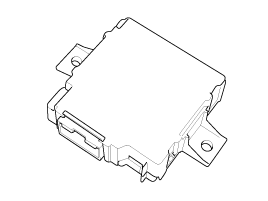 Kia Optima: TPMS Receiver. Description and Operation
Kia Optima: TPMS Receiver. Description and Operation
Description

| 1. |
Mode
| (1) |
Virgin State
| A. |
The receiver
as a sole part is shipped in this state. Replacement parts
should therefore arrive in this state. |
| B. |
In this state,
there is no Auto-Location, no sensor wake-up, no sensor
monitoring and no DTC monitoring.. |
| C. |
The state indicates
that platform specific parameters must be written to the
receiver and that sensors are un-learned. |
|
| (2) |
Normal State
| A. |
In order for
tire inflation state and DTC monitoring to occur, the receiver
must be in this state. |
|
|
| 2. |
Overview
| A. |
Auto-Learns new sensors. |
| B. |
Receives RF data from
sensor. |
| C. |
Uses sensor data to decide
whether to turn on TREAD Lamp. |
| D. |
Uses sensor information,
Auto-learn status, vehicle battery level, internal receiver states
to determine if there is a system or a vehicle fault. |
|
As manual for diagnosis methods by using diagnosis device, the main contents are
as follows:
1.
Connect self-diagnosis connector(16pins)
located in the lower of driver side crash pad to ...
Circuit Diagram
Connector pin number
Pin NO.
Discription
Remark
1
-
2
-
...
 Kia Optima: TPMS Receiver. Description and Operation
Kia Optima: TPMS Receiver. Description and Operation
 Diagnosis procedure by using diagnostic device
Diagnosis procedure by using diagnostic device TPMS Receiver. Schematic Diagrams
TPMS Receiver. Schematic Diagrams